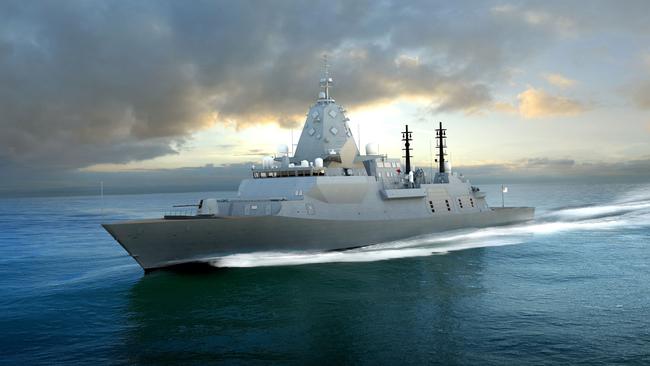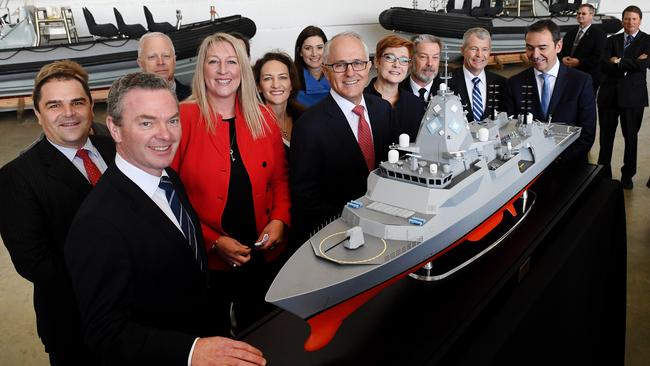Future frigates shipbuilding program to add $17 billion to state economy and support 6300 jobs
The Future Frigates project will cost the Australian taxpayer about $35 billion — but how much will flow back into the economy? And how many jobs will it support? We found out.

SA News
Don't miss out on the headlines from SA News. Followed categories will be added to My News.
Futuristic warships built in Adelaide will contribute $17 billion to the Australian economy over the project’s life, new modelling has found.
And at the peak of the Future Frigates project in 2028, more than 6300 workers will be on the job.
BAE Systems Australia, which will deliver the Australian version of new UK frigates, has released detailed modelling on the impact of the mission to build nine Hunter Class Frigates to patrol our borders, fight alongside our allies, and hunt enemy submarines in our region.
The report from BIS Oxford Economics shows how much of the $35 billion plus the Federal Government will spend on the project will flow back into the economy through jobs and the supply chain.
The Economic Contribution of BAE Systems in Australia found BAE’s defence work contributed $1.2 billion to the economy last year.
That work will expand with the frigates, and the report found that every direct job on the frigates will have a multiplier effect of 2.7 by 2028.

The report found the jobs will multiply through the companies who supply parts for the project and flow through from there.
There is a confusing array of workforce and economic projections associated with shipbuilding work.
This modelling looks specifically at the frigates program, including the supply chain.
The enormous project will run until at least 2048.
BAE Systems Australia chief executive Gabby Costigan said the frigates program would “more than double the company’s already significant contribution to the national economy”.
“Australia’s defence industry plays an indispensable role in supporting the Commonwealth Government as it adapts to our changing environment and grows the capability needed to better protect the nation,” she said.
“As regional defence priorities have changed, we have supported the development of a stronger and more capable sovereign defence industry.
“We are proud to work with companies throughout our supply chain on some of the most complex engineering programs in the world and together we create highly skilled jobs, new technologies and play our part in driving increased productivity in Australia.”

The largest share of BAE’s employees are already based in Edinburgh, and most of the work on the frigates will be done at Osborne.
“The program’s demand for a highly skilled workforce will boost advanced technology skills and know-how in SA and nationwide,” the report says.
“(It) also holds potential for industry and university partnerships. For example, BAE Systems plans to collaborate with Flinders University.”



